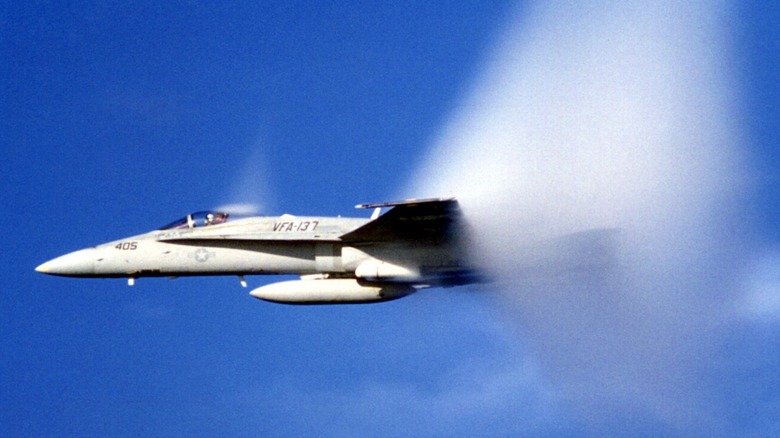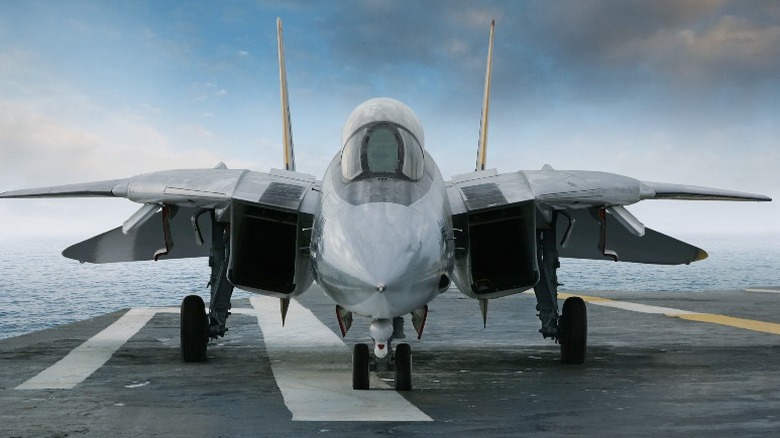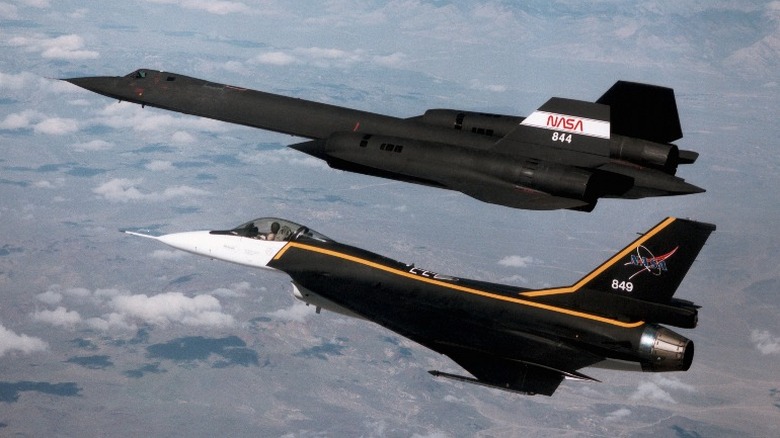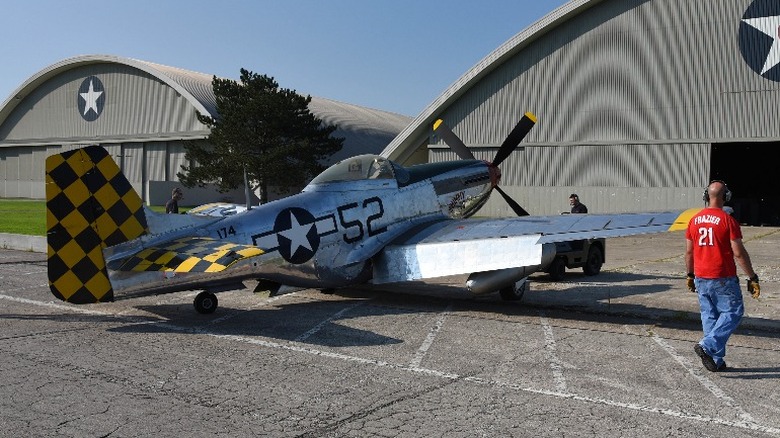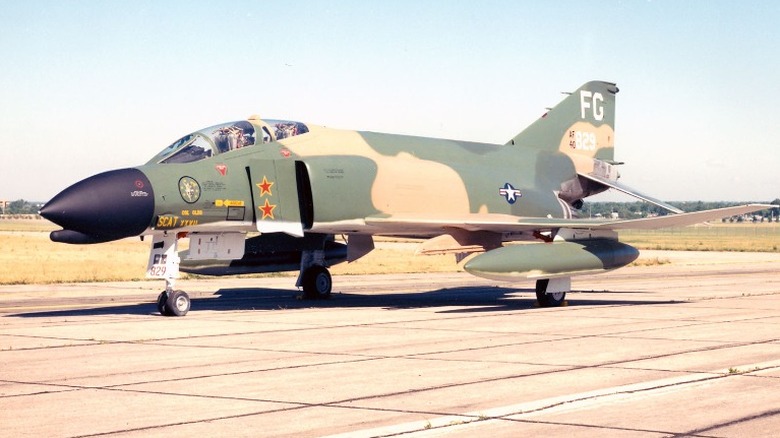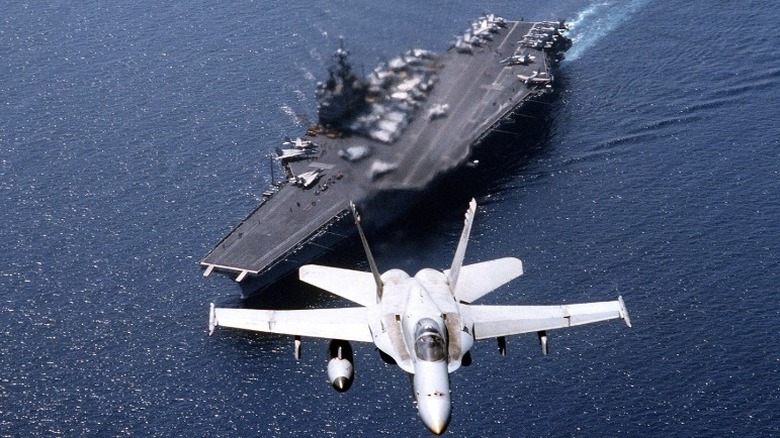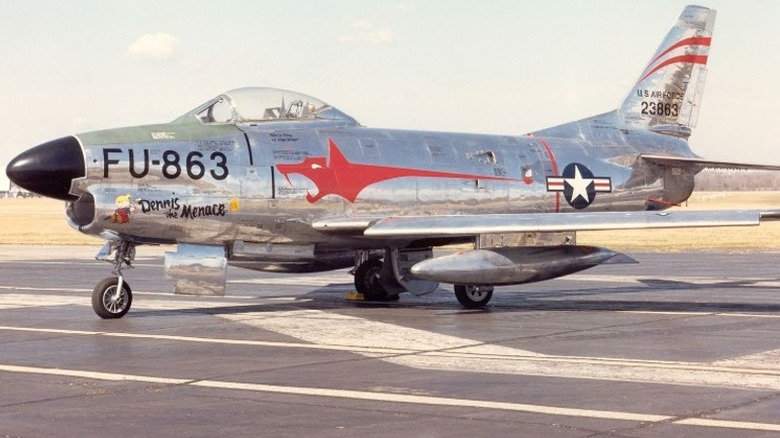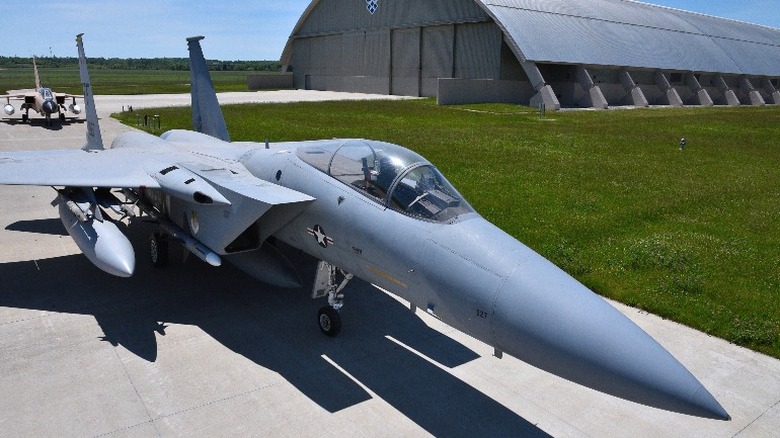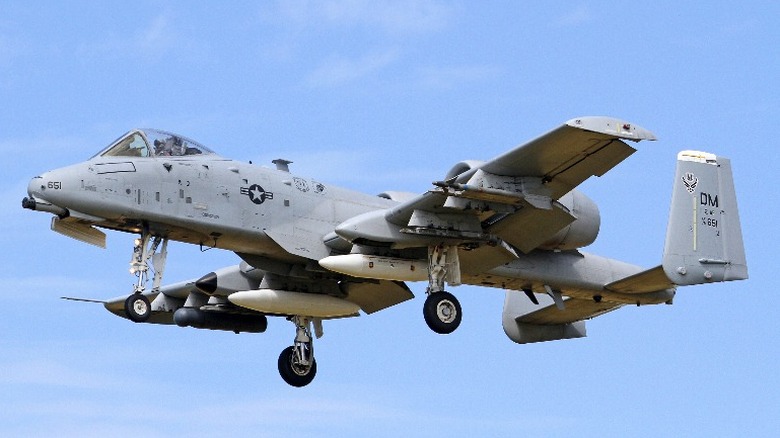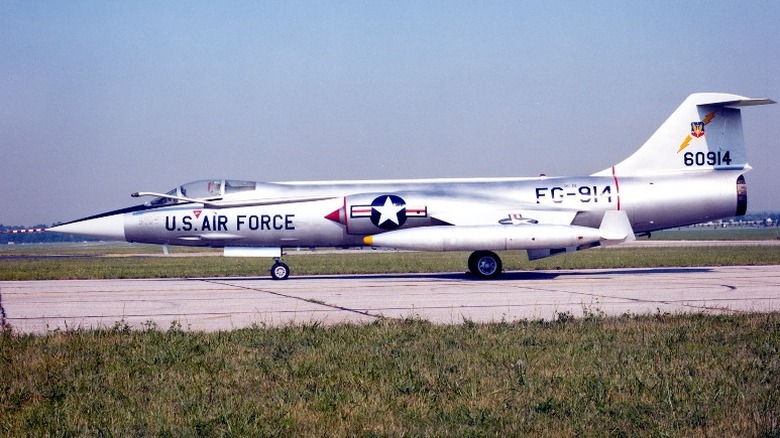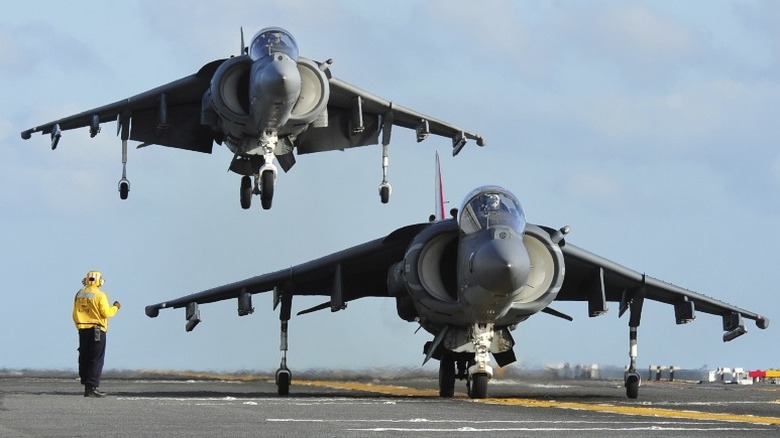10 Legendary U.S. Military Aircraft That Were Retired Too Soon
Over the past 100 years, military aircraft have played an important role in combat, making a significant contribution to victory or defeat. An air force is made up of a variety of aircraft, including fighters, bombers, ground-support (attack aircraft), transport and cargo planes, helicopters, and, in recent years, unmanned aerial vehicles (drones). Fighters are perhaps the most essential and can be the determining factor in measuring success or failure. These aircraft must defend a country's airspace and attack its enemies. They must be incredibly fast, carry potent weapons delivering them with pinpoint accuracy, and be virtually invisible to their adversaries.
Many modern military forces are made up of fourth-generation fighters, but the most powerful countries in the world are now equipping their militaries with fifth-generation aircraft. These fighters are exceptionally maneuverable, and feature advanced radar systems, state-of-the-art avionics, and advanced stealth characteristics. However, implementing new aircraft with the latest technology is an expensive proposition. In some cases, older aircraft can be upgraded with newer technology at a much lower cost, making them nearly as effective as the latest aircraft.
The McDonnell Douglas F-4 Phantom II is just one example. A Vietnam War icon, more than 5,000 of the third-generation supersonic fighters were built. Although officially retired, today, hundreds of the Phantoms have had their avionics and ordnance upgraded to modern standards and are still in service with several military forces. Here are 10 legendary U.S. military aircraft that were retired too soon.
F-14 Tomcat
Grumman Corporation designed and produced the F-14 Tomcat for the U.S. Navy from 1970 to 1992 to defend the U.S. against the Soviet Union's strategic bombers that threatened to deliver a nuclear bomb to American soil. Today, the delivery of nuclear weapons with slow-flying bombers to the continental United States is unlikely for several reasons: America's worldwide military presence, advanced detection technology, and the development of interceptors that make bombers vulnerable to attack. Intercontinental Ballistic Missiles (ICBMs) have become the preferred nuclear weapon delivery vehicle, making the F-14 a less effective deterrent.
The two-seat, twin-engine F-14 was the largest and heaviest carrier fighter in American aviation history. Much of its weight came from the Phoenix missile and the onboard systems required to operate it. The fighter weighed 61,000 pounds with loaded weapons and full fuel, making it significantly heavier than the F-16 Fighting Falcon or the F/A-18 that replaced it. Despite its weight, the F-14 was fast. Grumman installed Pratt & Whitney's TF30 engines, each rated at 14,560 pounds of thrust (under military power) but capable of producing nearly 25,100 pounds with the afterburner. The combined 50,200 pounds of thrust pushed the jet fighter to supersonic speeds up to a maximum of Mach 2.3. These were later replaced with higher-thrust General Electric F110 engines to resolve reliability issues with the TF30.
The variable-sweep wing positioning from 20 degrees to 68 degrees while airborne gave the F-14 ideal flight characteristics at low speeds for carrier landings and high speeds for the pursuit of an adversary. The F-14 Tomcat was retired from service in 2006, however, it still possesses performance characteristics that compete with many active-duty fighters.
Lockheed SR-71 Blackbird
The SR-71 Blackbird is legendary among military aircraft. The Blackbird family of aircraft including the A-12, YF-12, M-21, as well as the SR-71 flew at supersonic speeds exceeding Mach 3 and could reach an altitude of over 85,000 feet. According to CNN, "The Lockheed SR-71, designed in secrecy in the late 1950s, was able to cruise near the edge of space and outfly a missile. To this day, it holds the records for the highest altitude in horizontal flight and the fastest speed for a non-rocket powered aircraft."
Lockheed fabricated the Blackbirds almost entirely with titanium and other exotic heat-resistant alloys needed for sustained high-speed flight. The aircraft offered a unique platform for thermal experiments at heat-soaked temperatures exceeding 600°F. Two Pratt & Whitney J58 turbojets, with afterburners and an advanced inlet design that performed like a ramjet, generated 32,500 pounds of thrust each, giving the Blackbird the power needed to reach Mach 3.
The SR-71 Blackbird, developed for the USAF, completed its inaugural flight on Dec. 22, 1964. While the A-12 conducted secret missions for the CIA, the SR-17 flew frontline reconnaissance missions and operated as a research testbed of high-speed and high-altitude aeronautical flight for NASA through the end of the 1990s. For nearly 50 years, the SR-71 flew countless missions over dangerous areas, outrunning thousands of missiles, most of which were fired by the Soviet Union. No Blackbird aircraft were ever shot down, but a few were lost in accidents.
P-51 Mustang
The P-51 Mustang is considered the best all-purpose piston-engined fighter produced in significant numbers during World War II. The single-seat, single-engine fighter was designed and manufactured by North American Aviation for the British Royal Air Force (RAF) but later acquired by the U.S. Army Air Forces (USAAF). With one of the highest airplane production rates in WW II, the P-51 featured a combination of maneuverability, speed, and a long-range capability that outclassed its adversaries including the aircraft of the mighty Luftwaffe fighting force. The planes controlled the skies across Europe and hastened the end of the war.
Originally fitted with an Allison engine, it was an upgrade to the legendary Rolls-Royce Merlin engine that gave the P-51 its superior performance. Designated the P-51D, the fighter achieved a maximum speed of nearly 440 mph and flew to an operating ceiling of almost 42,000 feet. The Mustang carried 10 "zero rail" rockets under the wings, six .50-caliber machine guns, and bomb racks for up to 1,000 pounds of weapon stores or extra fuel tanks for long-range sorties. Later models were fitted with a Radar Warning system in the tail to signal the approach of other craft from behind.
The enhanced P51D with the Merlin engine filled the void left by other American WWII fighters operating in Europe. They provided essential long-range escorts to allied bomber missions across Europe and significantly reduced bomber crew losses suffered since the bombing campaign began in 1942. The P-51's performance prompted the U.S. Senate in 1944 to label it as "the most aerodynamically perfect pursuit plane in existence."
McDonnell Douglas F-4 Phantom II
McDonnell Douglas designed and produced the F4 Phantom in the late 1950s after Korean War pilots reported they were out-maneuvered by their North Korean adversaries who flew superior Soviet aircraft. The engineers began modifications to the existing F3H Demon naval fighter plane by adding additional space for a second crewman and focusing changes on speed. The results made the F-4 the U.S. Navy's fastest, highest-flying, and longest-range fighter. The improved aircraft broke several speed records when it began service in 1961. By 1962, it was breaking time-to-climb records, reaching 29,500 feet in a mere 61 seconds. The fighter also holds the record for flying at 98,556 feet.
The F-4 is powered by two J79 engines providing nearly 18,000 pounds of thrust each, which accelerate the aircraft to a speed of Mach 2.2, a record that remained until the arrival of the F-15. The exceptional thrust gave a skilled pilot the advantage of engaging and disengaging from the fight at will, prompting F-4 pilots to adopt the slogan "Speed is life."
In addition to the U.S. Navy and Air Force, the Marine Corps flew the F-4 Phantom, and the fighter contributed to the Vietnam War and the Gulf War Operation Desert Storm. Although the U.S. military retired the F-4 Phantom II in 1996, the aircraft served in some of the world's largest militaries until the late 1990s, and it is still in use by many smaller countries such as South Korea, Japan, and Turkey.
Boeing F/A-18E/F Super Hornet
In 1978, the F/A-18 Hornet completed its first flight, kicking off a military aircraft program that became operational with the Marine Corps in 1983 and the U.S. Navy in 1984. According to America's Navy, the program encompassed "the full mission spectrum: air superiority, fighter escort, reconnaissance, aerial refueling, close air support, air defense suppression, and day/night precision strike," replacing the F-4 Fantom and the A-7 Corsair. In 1999, the F/A-18E/F Super Hornet entered service in two configurations. The single-seat F/A-18E and the two-seat F/A-18F replaced the retiring F/A-18C and the F/A-18D aircraft.
The Super Hornet is a twin-engine, mid-wing, high-performance, and multi-mission tactical aircraft that weighs 7,000 pounds more than the F/A-18C Hornet fighter and features a 50% greater range. The stealthy-shaped aircraft with a reduced radar signature is equipped with two F414-GE-400 turbofan engines each producing 22,000 pounds of static thrust that propel the aircraft to an airspeed of Mach 1.8+ and a maximum ceiling of 50,000 feet. The Super Hornet boasts a combat range of 1,275 nautical miles and a price tag of $67.4 million (FY21).
On July 24, 2002, the F/A-18 E Super Hornet conducted its inaugural operational cruise with the VFA-115 strike fighter squadron onboard the USS Abraham Lincoln. The Hornet's initial combat action occurred later that year in a strike on hostile targets in Iraq's "no-fly" zone. Although the F/A-18E/F Super Hornet is still in service, Boeing has announced its retirement and will end production in 2025.
North American F-86 Sabre
In the early stages of the Korean War, Chinese and North Korean pilots had a performance advantage flying Soviet MiG-15s. American pilots flew the Lockheed P-80 Shooting Star with some success but the North American F-86 Sabre proved to have the superior capabilities needed to compete with the Soviet aircraft. The swept-wing F-86 consistently defeated the Soviet-built MiG fighters by a final ratio of 10-to-one, according to some historians.
However, Michael Hankins, National Air and Space Museum curator of Air Force history, agrees the Sabre performed admirably but says the oft-cited 10-to-one kill ratio is probably exaggerated. A five- or six-to-one is more reasonable, considering the U.S. pilots possessed greater piloting skills than the Chinese and North Korean MiG pilots but nearly equal to the better-trained Soviet pilots.
From 1949 to 1956, North American Aviation produced 7,800 F-86 Sabre airplanes. The company built four F-86 Sabres (F-86A, E, F, and H) as day fighters or fighter bombers, and three versions (F-86D, K, and L) as all-weather interceptors. The aircraft company upgraded successive models with more powerful engines and weapon systems ranging from bombs and rockets to machine guns and cannon with the objective of destroying hostile aircraft in flight or on the ground. According to Boeing, "All the F-86 Sabres were rated at 650 mph with a 600-mile combat radius operating at a ceiling of more than 45,000 feet." In September 1948, a Sabre set the aircraft's first official world speed record of 671 mph, and various versions of the fighter held world speed records for six consecutive years.
McDonnell Douglas F-15 Eagle
In 1960, the U.S. Air Force awarded a contract to McDonnell Douglas to design an all-weather fighter that could compete with the Soviet Union's MiG-25 interceptor and reconnaissance aircraft. The F-15 Eagle was the result, entering the USAF inventory in November 1974.
The F-15 is an all-weather fighter built in one-crew (F-15A/C) and two-crew (F-15B/D) configurations. Equipped with two Pratt & Whitney F100-PW-100 turbofan engines each producing 25,000 pounds of thrust, the aircraft achieves a speed of 1,875 mph (Mach 2.4). The F-14 operates at a maximum altitude of 65,000 feet and has a range of 2,400 miles. Typical armament includes AIM-7F/M Sparrow and AIM-9L/M Sidewinder missiles, AIM-120 advanced medium-range air-to-air missiles, Joint Direct Attack Munition (JDAM), Laser JDAM weapons, and a 20 mm Gatling gun.
The Eagle was the first U.S. fighter to have a total engine thrust greater than the aircraft's normal weight, permitting it to accelerate while in a vertical climb. The low weight-to-wing area ratio gives the F-15 exceptional maneuverability. The F-15 has proven to be a superior tactical fighter. According to International Aviation HQ, "Unlike most fighter jets, the F-15 has seen a lot of aerial combat. To date, the F-15 has 100 kills with a grand total of zero losses as a result of aerial combat." The Eagle is still in service today, the U.S. Air Force has decided it will begin phasing out the aircraft. However, it remains a highly effective weapon, and several militaries still include it in their fleet.
A-10 Warthog fighter
The A-10 Warthog was an effective weapon for Cold War Europe battlefields, particularly in Iraq and Afghanistan. It began operations in the late 1970s and has served as a close air support combat aircraft in the Gulf War, Operation Iraqi Freedom, Operation Enduring Freedom, and Operation Allied Force in Kosovo. Designed as a tank killer, the A-10 is armed with the seven-barrel GAU-8/A "Avenger" 30 mm Gatling cannon, rated at 3,900 rounds per minute, and it can also be armed with up to 16,000 pounds of ordnance including Maverick air-to-ground missiles, AIM-9 Sidewinder missiles, and JDAM satellite-guided bombs.
The A-10 is also remarkably resistant to ground fire. The titanium "bathtub "cockpit protects the pilot from shrapnel. The engines are mounted on the outside of the fuselage to limit potential damage from enemy infrared-guided missiles. The aircraft is built with redundant hydraulic and electrical systems, meaning the Warthog can still fly and fire its cannon even with a total loss of electrical power. The aircraft can fly at slow speeds beneath weather at about 100 feet. The low altitude provides the pilot with a naked-eye view of enemy targets allowing the use of weapons near friendly forces.
The Air Force has scheduled the Warthog for retirement claiming the aircraft cannot survive against modern-day air defenses, such as Russia's long-range S-400 Triumf, medium-range Buk, and short-range Tor. The war in Ukraine has verified that tactical jets, like the A-10, that lack stealth for protection are ineffective against air defenses fielded by modern militaries.
Lockheed F-104 Starfighter
Lockheed built the F-104 Starfighter as a high-performance day fighter designed to compete with the MiG-15 fighters that had demonstrated exceptional performance during the Korean War. The aircraft boasted excellent acceleration and top speed. Known as "the missile with a man in it," the Starfighter was the first U.S. military fighter (excluding experimental aircraft) to fly twice the speed of sound (Mach 2). Despite its top speed record, when the F-104 was introduced in 1958 it was surpassed by faster aircraft with longer ranges. However, the fighter had the right performance characteristics to fly low-level sorties against Vietcong forces in Vietnam.
While other aircraft were routinely being shot down, the Starfighter performed its duties relatively untouched. The aircraft's success encouraged many U.S. pilots to train as F-104 pilots and prompted numerous purchases from other countries. A General Electric J79-GE-11A turbojet engine producing 10,500 pounds of thrust and 16,000 pounds with the afterburner powered the fighter. The aircraft operated with a 4,645-meter (15,239-feet) ceiling and a range of 1,200 kilometers (745 miles).
In 1980, when Lockheed ended Starfighter production, 14 countries had operated F-104s, using them as interceptors, ground-attack aircraft, reconnaissance aircraft, and in other roles. The F-104 Starfighter also proved to be an invaluable asset to NASA over a 40-year stretch beginning in 1956. The agency used 11 aircraft for a variety of missions providing flight research data on aircraft performance characteristics. The F-14 was even used to test the Space Shuttle thermal protection tiles.
McDonnell Douglas AV-8B Harrier II
A fixed-wing vertical/short takeoff and landing (V/STOL) aircraft can take off vertically making it one of the most maneuverable combat aircraft. It can zoom out of the range of enemy fire extremely quickly, taking off and landing from very short runways, small aircraft carriers suitable for helicopters, and forest clearings. Several countries including England, France, Germany, and the United States attempted to build a V/STOL aircraft during the 1960s, but all failed except England with its Harrier. So, McDonnell Douglas acquired a license to build the Harrier, improved the design, and released it as the Harrier II.
A collaboration between McDonnell Douglas, British Aerospace, and Rolls-Royce developed the AV-8B Harrier II with production beginning in 1981 in St. Louis, Mo. The improved Harrier, hosting the pilot only, weighed 31,000 pounds and was powered by a Rolls Royce F402-RR-408 turbofan engine producing 23,400 pounds of thrust. The AV-8B carried more fuel than the AV-8A, had higher lift, and better cruise characteristics. The sub-Mach-speed aircraft flew at 647 mph, reached a maximum operating altitude of 38,000 feet, and had a range of 2,416 miles. The armament consisted of two 25 mm cannons, and 9,200 pounds of bombs, rockets, missiles, or optional extra fuel tanks.
In 1991, 86 U.S. Marine Corps Harrier IIs flew 3,380 combat missions and delivered more than 6 million pounds of ordnance in Operation Desert Storm over the Persian Gulf. Production of the AV-8B Harrier II ended in 2003. It will be replaced by the F-35B Lightning II Joint Strike Fighter.
